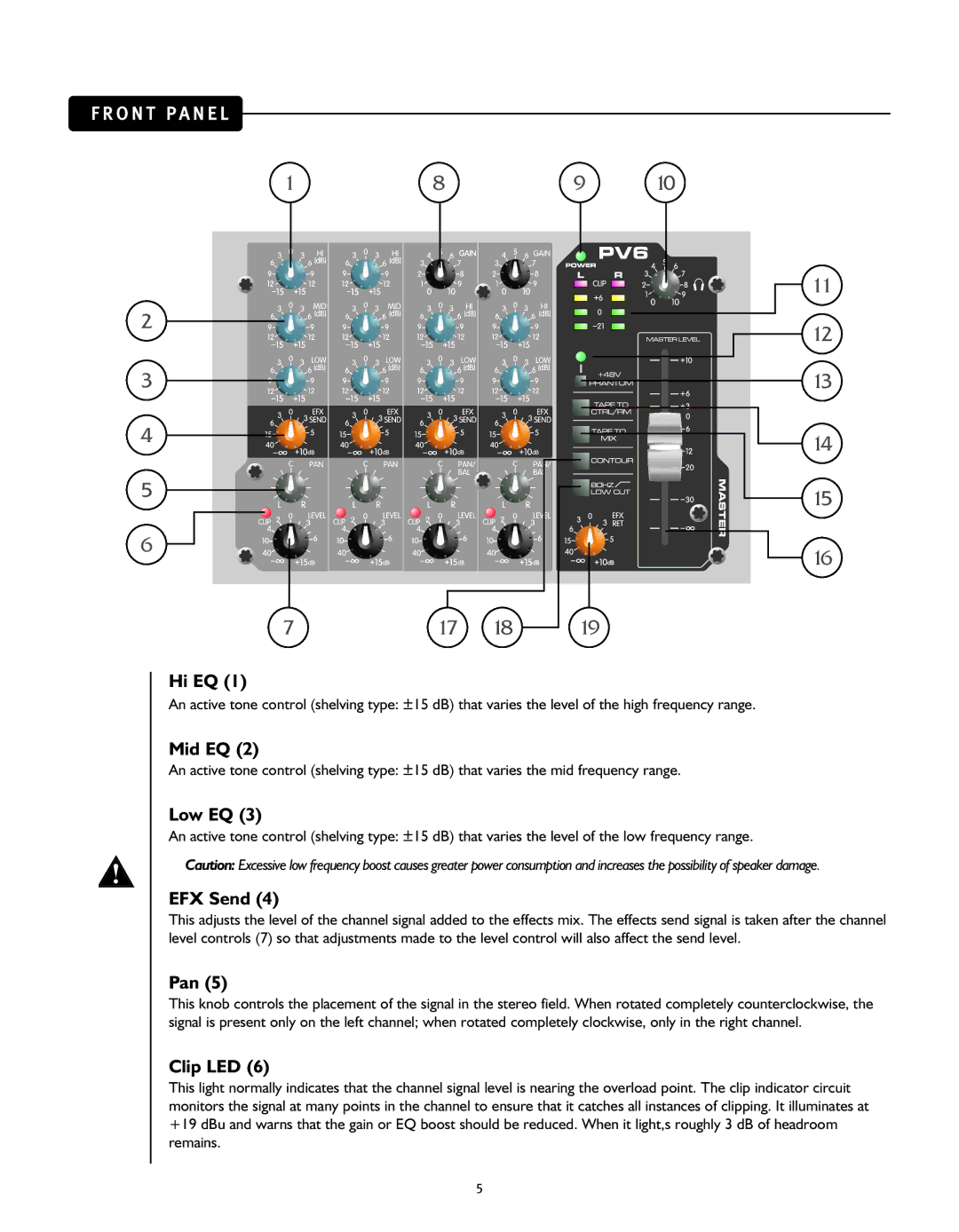
F R O N T P A N E L
1 | 8 | 9 | 10 |
2 |
|
|
|
3 |
|
|
|
4 |
|
|
|
5 |
|
|
|
6 |
|
|
|
7 | 17 | 18 | 19 |
11
12
13
14
15
16
Hi EQ (1)
An active tone control (shelving type: ±15 dB) that varies the level of the high frequency range.
Mid EQ (2)
An active tone control (shelving type: ±15 dB) that varies the mid frequency range.
Low EQ (3)
An active tone control (shelving type: ±15 dB) that varies the level of the low frequency range.
Caution: Excessive low frequency boost causes greater power consumption and increases the possibility of speaker damage.
EFX Send (4)
This adjusts the level of the channel signal added to the effects mix. The effects send signal is taken after the channel level controls (7) so that adjustments made to the level control will also affect the send level.
Pan (5)
This knob controls the placement of the signal in the stereo field. When rotated completely counterclockwise‚ the signal is present only on the left channel; when rotated completely clockwise‚ only in the right channel.
Clip LED (6)
This light normally indicates that the channel signal level is nearing the overload point. The clip indicator circuit monitors the signal at many points in the channel to ensure that it catches all instances of clipping. It illuminates at +19 dBu and warns that the gain or EQ boost should be reduced. When it light,s roughly 3 dB of headroom remains.
5
